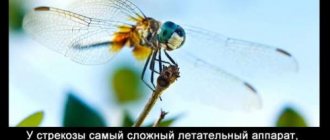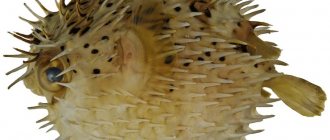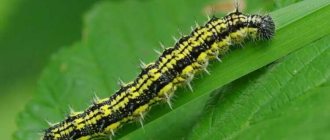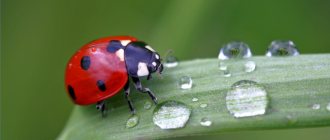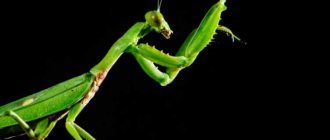Bright fluttering butterflies can leave few people indifferent. Smoothly circling over a flower meadow, they fascinate with their beauty and deeply touch the strings of the human soul. In addition to beauty, these extraordinary insects are interesting for their behavior and vital features. In this article we will share with readers unusual stories from the life of butterflies. In our material we have collected a variety of interesting facts about butterflies. Such information will be especially informative for primary schoolchildren and preschool children. The information can be used in a lesson or simply told to children in order to expand the knowledge of the world around the little researchers.
Who are butterflies?
Butterflies are lepidopteran insects. This means that on their wings there are many small scales, which, refracting sunlight at different angles, form a characteristic pattern.
Children often confuse scales with pollen. They try to shake off and clean the wings of the insect. In fact, you should never do this. The butterfly's wings will become crumpled, it will not be able to fly and will die.
But in nature there are also butterflies without wings. These are species such as steppe and common willow. They live in a cocoon and feed on what the caterpillars have managed to store.
There are also butterflies that can dive. These are insects like underwater moths. Interesting facts about butterflies for 2nd grade children can be used in science lessons. It will still be difficult for preschoolers to understand the features of the physiology of insects. But teaching children to respect nature can and should be done at any age.
Butterflies have three pairs of legs and a long proboscis, which, if necessary, turns into a full-fledged feeding organ. These lepidopterans are plant pollinators, just like bees. Besides, they never sleep. Some attract attention with their unusual bright colors, while others, on the contrary, are camouflaged. For example, the lemongrass butterfly looks like a leaf. Interesting facts about this beauty can be found below.
Butterflies live all over the world except Antarctica. But the lifespan of these insects is short: from several days to six months, depending on the species.
The science that studies butterflies is called lepidopterology.
Food and habitats
It seems that all butterflies feed on the nectar of flowers and live only in hot countries, but this is far from the case. And here are some surprising facts:
- There are predatory butterflies that drink the blood of animals. To do this, they pierce the skin with their proboscis and suck blood. These are representatives of Calyptra eustrigata, living in India and in nearby countries up to Malaysia. Mainly males differ in their predatory habits, and females eat the juice of various plants and fruits.
Vampire butterfly Calyptra eustrigata
- Various patterns on the wings, all colors, shades, tints - this is not a whim of Mother Nature, but an opportunity to defend itself. The coloring of butterflies is an excellent camouflage that helps these beautiful creatures hide from enemies and live out their life cycle, leaving offspring. That is why the brightest butterflies live in a world of riot of colors - in tropical forests. And the nondescript ones are in cold regions.
Patterns on butterfly wings
- Some butterflies don't eat at all. It is amazing. These butterflies don't even have a mouth. They gain energy and nutrients during the caterpillar period.
- Some butterflies eat very unsightly food. For example, the Red Admiral feeds exclusively on rotting fruit and even manure.
Butterfly Red Admiral
- No representatives of Lepidoptera were found only in Antarctica. And so they are distributed throughout our planet.
What do butterflies eat?
Depending on the species, insects can feed on flower nectar, sap from trees and rotten fruits. Some people prefer tears and animal droppings. At certain times, they are not averse to eating mud, thanks to which they can stock up on minerals. And the Calyptra butterfly feeds on the blood of cattle. In addition, some subspecies can suck and drink blood from an open wound, while others are even able to pierce the skin on their own using a sharp proboscis.
These interesting facts about butterflies can be presented in a playful way to even the youngest children.
Nutritional Features
Basically, insects prefer to eat pollen, flower nectar, tree sap, overripe fruits, but there are also special species that are picky eaters. For example, the hawk moth, a honey lover, enters the hive and enjoys its favorite food. Some members of the nymphalid family replenish moisture loss by eating the urine and sweat of wild and domestic animals. Some tropical butterflies prefer crocodile tears as moisture.
Insects, which do not have a mouthpart at all and live extremely short lives, use supplies that were made when the caterpillar found it. Some types of butterflies are real vampires. They replenish lost strength by consuming animal blood.
The magic of birth
Until now, not a single scientist has been able to explain all the metamorphoses that occur during the development of an insect. Interesting facts about butterflies can be told by telling about the stages of the appearance of such an unusual insect. Thus, a butterfly goes through several stages of formation: egg - caterpillar (larva) - pupa - adult.
A sexually mature female most often lays eggs on tree leaves. Some species protect their offspring by burying eggs in the ground, others cover them with their own scales, and others have the ability to produce special mucus.
Depending on the type of insect and external factors, the caterpillar eggs can hatch within a few days or months. This period is characterized by the fact that the insect actively feeds, stocking up on necessary substances.
During the molting process, morphological changes occur - the insect turns into a pupa. Butterflies protect their peace in different ways: some weave cocoons from a silk thread that they produce themselves, others build a “house” from grains of sand and earth, and still others from their own cuticle.
Fluttering beauties are born with wet wings not spread. Therefore, at the moment of hatching from the pupa, it is extremely important for butterflies to have support in the form of a twig - by grasping it with their paws, the insects dry out and spread their wings. After which they can safely take their first flight.
We recommend bringing such interesting facts about butterflies to children of primary school age while walking in the park or at their summer cottage in the spring. You can consolidate your theoretical knowledge by observing the development of an insect from larva to adult butterfly on walks.
How do butterflies protect themselves from predators?
Butterflies are very fragile and defenseless creatures, so nature made sure that they could protect themselves from predators in a variety of ways. Many butterflies have a very unpleasant taste, a foul smell, and some are simply poisonous: this is due to the fact that when they were caterpillars they ate poisonous plants. After a predator tries to bite on a poisonous butterfly, he will stay away from this species for a very long time, and perhaps always. Those butterflies that, for various reasons, do not have such powerful means of defense, use another “weapon” - coloring that copies the coloring of inedible butterflies. Moreover, some butterflies, trying to avoid being caught by a predator, imitate not only the colors, but even the shape of their wings. “Disguising” as bumblebees, wasps, as well as dry leaves, pieces of bark, twigs and twigs is also very popular. By the way, various “eyes” - a popular pattern on the wings of butterflies - are also a way to protect yourself from the enemy.
Butterflies in mythology
Interesting facts about butterflies, their origin and people’s attitude towards these insects can be learned by getting acquainted with archaeological artifacts. Butterflies are the most ancient insects. Excavations have uncovered remains that are 150 million years old. There are about 160,000 species of these unusual representatives of the fauna.
In ancient times, butterflies, like everything mysterious and unsolved, were simultaneously admired and feared. The unusual life cycle of the insect provoked the mystification and deification of such a creature.
During excavations, frescoes of ancient Egyptians were found depicting butterflies. In those days, people identified human life with this insect.
For some peoples, a butterfly is a harbinger of happiness, joy, and love. Others believe that the fluttering insect is the souls of dead people, the embodiment of demons and witches.
In ancient Greek myths, butterflies are found in the role of Psyche - a girl who personifies the human soul, and the Scandinavian peoples came up with elves - kind people with butterfly wings. In India, the butterfly was considered the progenitor of the whole world. And Buddha dedicated an entire sermon to this insect. In many beliefs, the butterfly represents rebirth and immortality.
Such interesting facts from the life of butterflies will interest not only children, but also adults.
Insect orders: butterflies, Homoptera, Diptera, fleas
Today there are about 150,000 species of squamates that live on all continents except Antarctica. Tropical areas are especially rich in brightly colored butterflies. In addition to butterflies, there are several other similar orders of insects: Homoptera, Diptera, fleas. We invite you to get acquainted with the main representatives of each squad:
- Homoptera. There are more than 30,000 species. These include cicadas, whiteflies, psyllids, scale insects, aphids, gall midges, and scale insects. All of them belong to sucking insects that feed on plant sap. They have a piercing-sucking mouth like a proboscis. Why are they called Homoptera? Nature has endowed them with two pairs of transparent wings - front and rear.
- Diptera. This order includes a million species. They arose more than 100 million years ago. Everyone is familiar with mosquito bites and annoying flies. They have a front pair of wings. Their hind wings can be called small appendages - halteres, which maintain balance during flight.
- Fleas. There are more than 1000 species. These are small insects without wings and with flattened sides. The size of fleas is from 1 to 5 mm. They have a large abdomen and legs, but a small chest and head. They have a slippery and smooth body dotted with bristles and hairs. All this is to make it easier to move through the fur of animals where fleas live. An adult flea is a bloodsucker that parasitizes birds and mammals.
Lepidoptera are of great importance in nature and human life. After all, butterflies are excellent pollinators of plants. Many large butterflies, such as swallowtail and Apollo, simply fascinate with their beauty. They become exhibits of many entomological collections.
Traditions
Today you won’t surprise guests with butterfly fireworks at a wedding or anniversary. It turns out that this tradition is hundreds of years old! It originated in Japan. The lightness and charm of insects was compared with the art of a geisha. Therefore, butterflies at a wedding were considered a wish for the bride to comprehend female wisdom. A pair of butterflies symbolized a strong marriage. These interesting facts about butterflies have long been taken into account by modern wedding organizers, offering young people to decorate their holiday with live and artificial butterflies.
Modern Chinese weddings are not complete without the symbol of a butterfly: before the wedding, the groom gives the bride a decoration in the form of this insect as a symbol of love and care.
Butterflies began to be specially bred at the court of Louis XIV. In the king's winter garden one could find insects of the most varied colors and types.
Popular message topics
- Monuments of Voronezh
Voronezh is a large city, so there are many monuments installed in it. These are monuments to both statesmen of our country and famous people whose fate is in one way or another connected with this regional center. - Polymers Polymers
are high molecular weight (more than 10,000 daltons) compounds consisting of repeating low molecular weight structural units (monomers). The number of these units is called the degree of polymerization. - Cross training
Cross running requires good physical preparation. What is important is endurance and running speed - this is what cross-country training trains. It includes a set of exercises that every athlete needs to perform.
Record holders
The most interesting facts about record-breaking butterflies:
- The largest representative of the species is Tisania agrippina. Its wingspan is almost 31 cm. Slightly smaller than the Birdwing. Its dimensions reach 28 cm.
- The smallest is the Malyutka moth. Its open wings are 2 mm long.
- The longest proboscis is that of Hawk Moths. In a species living in Madagascar, the length of this organ is 28 cm.
- The most common butterfly in the world is the Vanessa Cardi butterfly of the Nymphalidae family.
- The loudest squeak is made by the disturbed Death's Head of the Hawkmoth family.
- Peacock-Eyes have a keenly developed sense of smell. They can detect scent at a distance of 10 km.
- Hawkmoths fly the fastest.
- The heaviest representative of butterflies is Boisduval.
Appearance of butterflies, where they live and what they eat
Among invertebrates, butterflies have the most complex body structure and the most beautiful appearance. The insect's body consists of an abdomen, chest, head with antennae and proboscis, 3 pairs of legs and two pairs of beautiful wings, which contain all the beauty of nature, various patterns and colors.
The butterfly has a total of 4 wings, each of which is covered with scales ranging from 100 thousand to 1 million in larger tropical species. They are: pigment (containing a bright coloring matter) and optical (reflecting and refracting light).
Butterflies feed exclusively on liquids that they can drink through their proboscis: flower nectar, tree sap, pollen, dung and rotting fruit. They can suck moisture from puddles or from leaves, and sometimes sit on a person in search of a drink, attracted by the smell of sweat, which contains salts and minerals necessary for their life.
Life expectancy also depends on where the butterfly lives, its type and size: smaller ones can live only a few days, and large insects living in the tropics can live up to several months. Representatives of middle latitudes live on average 3-4 weeks, and representatives of northern latitudes live up to 2 years.
Lemongrass butterfly: interesting facts
In our latitudes you can find lemongrass, which belongs to the Belyanok family. It is very difficult to notice in the foliage, since the color resembles a tree leaf. You can often see children surprised by the unusual flight of the “leaf”. This color is a protective camouflage.
Another interesting feature of lemongrass is the fact that it never lands with its wings open. If a butterfly is disturbed, it will fold its wings and legs and then fall down, thus masquerading as a twig or fallen leaf. She is a long-liver, as she can live for more than a year.
We told you just some interesting facts about butterflies. It is important for children to learn that butterflies are extraordinary creatures. Each species has its own characteristics and inexplicable abilities. They fascinate and inspire. It should be emphasized that it is impossible to destroy such beautiful creatures for fun or a passing hobby. From a very early age, adults should explain to children the importance of such a small creature as a butterfly in the world around them.
Life cycle
The life cycle of lepidoptera begins with the laying of eggs by adult insects directly on the leaves or branches of plants, where the butterfly (or rather its egg) lives in the first stage of its development, which lasts 8-15 days. The color, number and shape of eggs depend on the species; there can be up to 1 thousand eggs in total, most of which do not survive to adulthood. Butterfly species that live in temperate climates typically lay their eggs in late fall or early winter and remain dormant until spring.
The next stage, caterpillars, also takes place on the plants on which they feed. According to their lifestyle, they are divided into those who openly crawl over leaves and branches in search of food, and those that hide under special covers made independently using silky threads and parts of leaves. Some caterpillars are bright in color, demonstrating their inedibility, while others disguise themselves as green parts of plants.
The duration of the life cycle depends on the temperature and climate where butterflies live in nature: in northern species, caterpillars can hibernate (diapause) until next spring, and their development cycle can last up to 7-10 years.
The most stationary stage - the pupa - looks like a light-colored cylinder; as it matures, the color changes to that which is characteristic of this species. Pupae can either attach to leaves or lie on the ground without feeding for a long time.
An adult butterfly (imago) crawls out of the pupa, pushing off the shell with its paws, and males are born earlier than females. After emerging from the shell, its wings gradually straighten and harden, and a characteristic coloring also appears.
